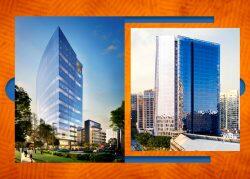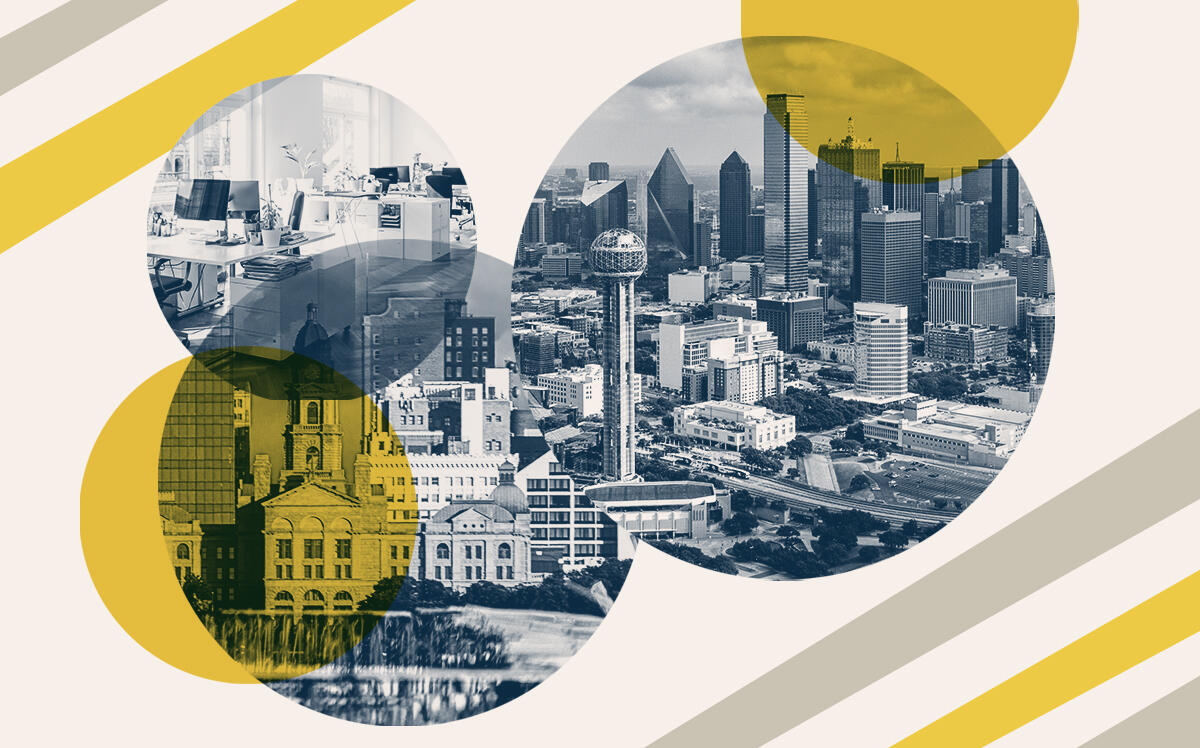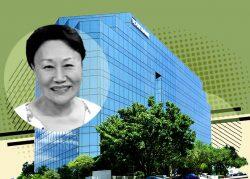 NC-based REIT bets $130M on DFW office towers
NC-based REIT bets $130M on DFW office towers
Trending
Far North Dallas leads DFW office recovery
Metro market trending up overall, but a reckoning looms

As the Dallas-Fort Worth office market continues to recover from the pandemic-driven exodus, a new landscape is emerging across the metro area.
The overall DFW market marked its third consecutive quarter of positive net absorption for the first time since 2018, according to CBRE’s second-quarter office report. The net absorption of 556,144 square feet for the second quarter was a 255 percent increase over the -358,044 square feet for the same period last year.
The metro market also saw a 2.4 percent drop in vacancy over last year, as well as an 18 percent jump in asking rents. But these improvements were by no means evenly distributed across the area’s individual submarkets.
The suburban submarket of Far North Dallas — the region’s largest, representing more than 20 percent of the metro market’s net rentable space — saw net absorption improve by nearly 1100 percent year-over-year, skyrocketing from -33,555 square feet in the first quarter of 2021 to a positive net absorption of 335,000 square feet in the same period this year.
And that figure — the highest in the whole DFW market — came as Far North Dallas was digesting 106,622 additional square feet delivered in the second quarter. The area also had a slightly higher than average drop in vacancy.
The metro’s second largest submarket, Las Colinas — also in the northern suburbs — was a mixed story in the second quarter. It had a 23 percent increase in net absorption year over year, but the figure remained negative, at -184,540 square feet — the lowest in the region — and vacancy in the submarket increased nearly 5.5 percent.
Meanwhile, the Dallas Central Business District, DFW’s third largest submarket, had a bad year, with a 17 percent drop in net absorption year over year — though it remained positive at 71,492 square feet in the second quarter. The area also had a 3 percent increase in vacancy to a rate of over 32 percent — the region’s highest, and more than seven points higher than the metro average of 25 percent.
The suburban Richardson/Plano submarket, the region’s fourth largest, endured a 114 percent plunge in net absorption year over year, plummeting from 73,717 square feet in the second quarter of 2021 into negative territory, reaching -24,972 square feet in the same period this year. But the area saw a nearly 8 percent drop in vacancy, more than triple the metro average.
Several of the region’s smaller submarkets posted standout numbers in the second quarter. Preston Center’s net absorption leapt more than 1,700 percent year over year to 168,214 square feet.
Northeast Fort Worth saw its vacancy rate plunge more than 47 percent to 10.4 percent — the lowest in the metro area. Meanwhile nearby North Fort Worth’s vacancy rate jumped by more than 24 percent to nearly 13 percent.
Asking rents in East Dallas skyrocketed more than 55 percent year over year to an average of $34.14 per square foot annually. The biggest drop was in Lewisville/Denton, where rents fell by 5.5 percent to $23.81 per square foot each year.
The highest office rents in the metro area are in Uptown/Turtle Creek, where each square foot of space will cost you $46.94 for the year — a nearly 3 percent increase from 2021. The cheapest space in DFW is in the Stemmons Freeway submarket, where you can rent for just $19.84 per square foot annually.

Sotheby’s Scott Bumpas
The high rent in the Uptown market — which also saw net absorption jump more than 302 percent year over year to 220,157 square feet — shows that the urban core still enjoys some advantages in amenities over the suburban submarkets, according to Scott Bumpas, director of the commercial division at Briggs Freeman Sotheby’s International Realty.
“In Uptown, you can walk downstairs from your building, and in 5 blocks you can get to some of the best restaurants in Dallas,” he said.
Uptown will need to leverage those amenities going forward, however, because it has nearly 1.5 million square feet of additional office space under construction, the second fattest pipeline of any of DFW’s submarkets.
High-flying Far North Dallas has the most new office space coming down the pike, with more than 1.6 million square feet coming down the pike. Struggling Las Colinas has the third biggest pipeline, with just over 1 million square feet.
Office construction in DFW for the second quarter was up by 18 percent from the first quarter, according to CBRE, with nearly 6 million square feet of office space currently under construction, ranking the metro fourth in the nation for office space under construction in May.
Though Texas leads the nation in returning to the office, Bumpas thinks returning to the pre-pandemic status quo just isn’t realistic.
“We’re going to see a little different dynamics than most other markers, but generally, I think the office is kind of in trouble,” he said. “I think there’s going to be an even bigger hit on the office.”
Even two and a half years after the pandemic lockdowns, the full effect of the remote/hybrid work model has not yet wrought its full impact on the office market, according to Bumpas, since office leases have such long timelines.
“When leases expire, that’s when you’ll see space diminishing. Now I’m really beginning to believe people aren't going to be back to the office,” he said, “When these leases expire in two to three years, I think you’re really going to see some contraction.”
Read more
 NC-based REIT bets $130M on DFW office towers
NC-based REIT bets $130M on DFW office towers
 Investors buy 10-story office tower in Dallas suburb
Investors buy 10-story office tower in Dallas suburb




